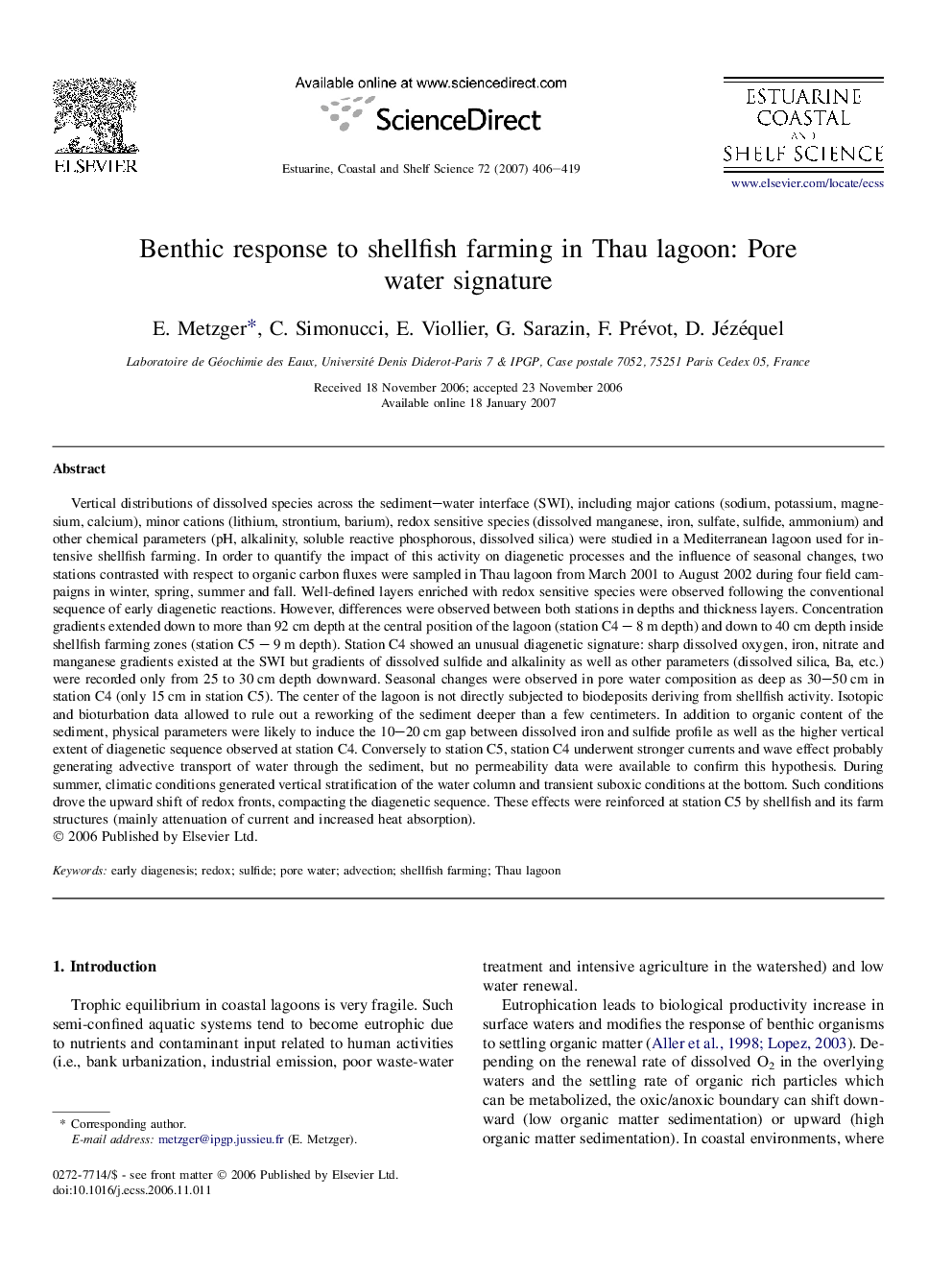| کد مقاله | کد نشریه | سال انتشار | مقاله انگلیسی | نسخه تمام متن |
|---|---|---|---|---|
| 4541885 | 1326743 | 2007 | 14 صفحه PDF | دانلود رایگان |

Vertical distributions of dissolved species across the sediment–water interface (SWI), including major cations (sodium, potassium, magnesium, calcium), minor cations (lithium, strontium, barium), redox sensitive species (dissolved manganese, iron, sulfate, sulfide, ammonium) and other chemical parameters (pH, alkalinity, soluble reactive phosphorous, dissolved silica) were studied in a Mediterranean lagoon used for intensive shellfish farming. In order to quantify the impact of this activity on diagenetic processes and the influence of seasonal changes, two stations contrasted with respect to organic carbon fluxes were sampled in Thau lagoon from March 2001 to August 2002 during four field campaigns in winter, spring, summer and fall. Well-defined layers enriched with redox sensitive species were observed following the conventional sequence of early diagenetic reactions. However, differences were observed between both stations in depths and thickness layers. Concentration gradients extended down to more than 92 cm depth at the central position of the lagoon (station C4 – 8 m depth) and down to 40 cm depth inside shellfish farming zones (station C5 – 9 m depth). Station C4 showed an unusual diagenetic signature: sharp dissolved oxygen, iron, nitrate and manganese gradients existed at the SWI but gradients of dissolved sulfide and alkalinity as well as other parameters (dissolved silica, Ba, etc.) were recorded only from 25 to 30 cm depth downward. Seasonal changes were observed in pore water composition as deep as 30–50 cm in station C4 (only 15 cm in station C5). The center of the lagoon is not directly subjected to biodeposits deriving from shellfish activity. Isotopic and bioturbation data allowed to rule out a reworking of the sediment deeper than a few centimeters. In addition to organic content of the sediment, physical parameters were likely to induce the 10–20 cm gap between dissolved iron and sulfide profile as well as the higher vertical extent of diagenetic sequence observed at station C4. Conversely to station C5, station C4 underwent stronger currents and wave effect probably generating advective transport of water through the sediment, but no permeability data were available to confirm this hypothesis. During summer, climatic conditions generated vertical stratification of the water column and transient suboxic conditions at the bottom. Such conditions drove the upward shift of redox fronts, compacting the diagenetic sequence. These effects were reinforced at station C5 by shellfish and its farm structures (mainly attenuation of current and increased heat absorption).
Journal: Estuarine, Coastal and Shelf Science - Volume 72, Issue 3, April 2007, Pages 406–419